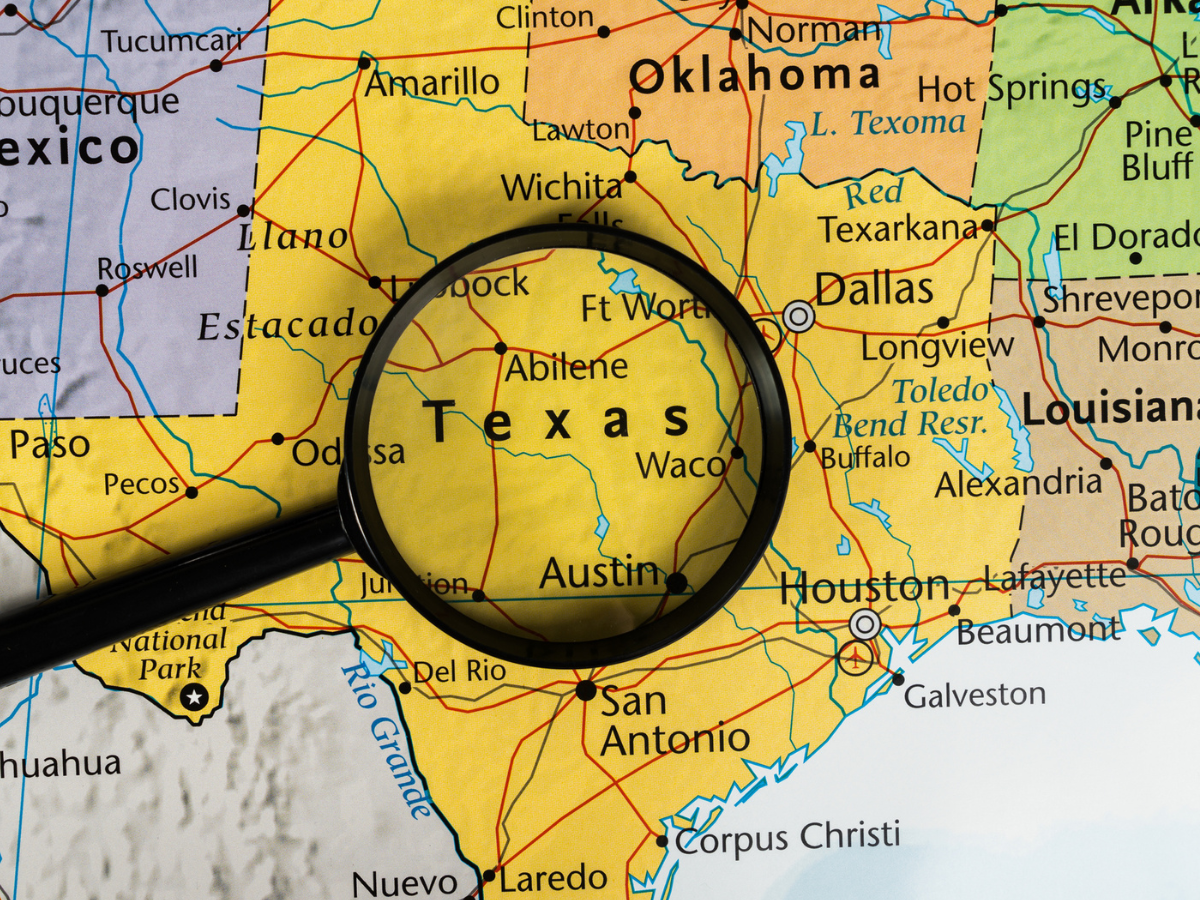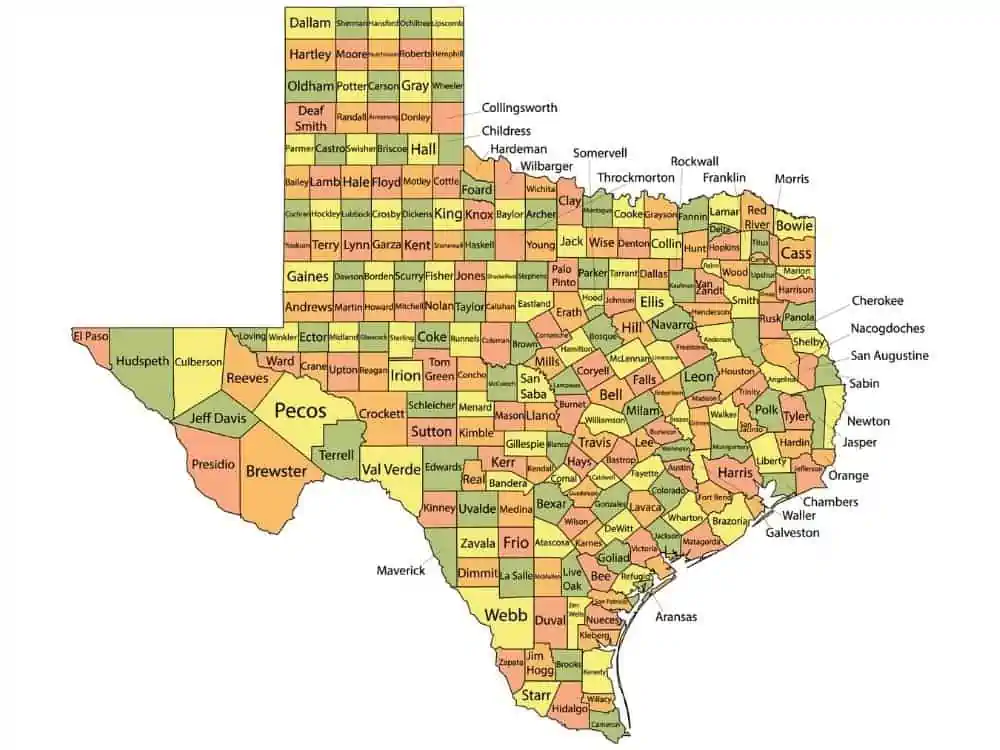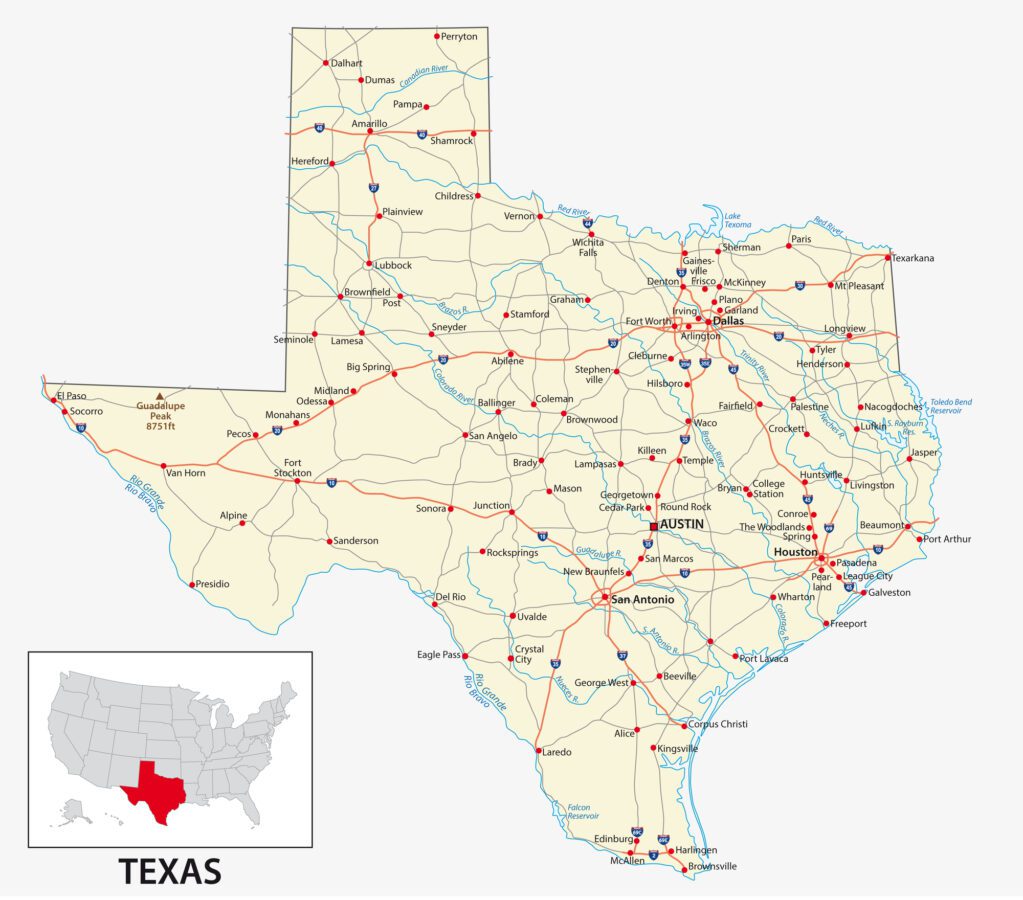Share the post "Divide Texas Into States (Is It Possible)"
Texas is the largest of the 48 contiguous states in the U.S. Alaska is the only state with a larger land mass. The Lone Star State measures over 268,596 square miles, which equates to 7.07% of the land in the entire country. To give this context, Texas would be the 40th largest country in the world if it was a nation.
This is a staggering statistic Considering 193 countries in the world. Furthermore, Texas is bigger than each country in Europe. In addition, Texas is the second most populated state in the U.S. and the only state with over 30 million people (30,029,572), aside from California.

Can Texas Divide Into States?
We’ve seen a lot of change in the United States over the last few years, particularly regarding relocations. The Texas population has increased significantly over the past two decades in virtually all population change components.
This contrasts with places like Florida, where population growth is linked directly to domestic migration. People have been coming to Texas for hundreds of years. It’s one of the most critical states in the country and holds a wealth of historical and national prestige.
One of the characteristics that Texans love about their home state is that it embraces freedom and traditional American values. So much so that a common topic for debate is whether Texas could be its own republic; another exciting conversation is if Texas should and could be split into multiple states.
But can Texas be divided into states? The answer is quite complicated, and legalities mean that going through this process would be tricky. But hypothetically, it might be possible. So, let’s explore this idea in more detail.

The Pre-Approved Entitlement of Texas
Texas was the only U.S. state welcomed to the Union with a unique pre-approved privilege allowing it to split into a maximum of five individual states if it wished to. That said, the Federal Constitution makes this process very difficult, and Texas would likely need buy-in from the rest of the country.
But we’ll return to this a little later after discussing Texas’s unique entitlement. When Texas was admitted to the Union in 1845, the U.S. Congress enacted an agreement that annexed Texas and made it an official state. Within this resolution was a specific arrangement, paraphrased below.
With the state’s consent, Texas may add up to four new states within its existing territory as long as they have a sufficient population. These admissions are entitled within the provisions of the Federal Constitution.

Supporters of this idea believe this agreement was in place to allow the state to break up once it reached a specific population and economic sovereignty. Texas legal professionals began calling the deal a “Texas Tots” provision.
This would mean that Texas would be the mother state, and the four others would be its “tots”. Interestingly, this not only became the standard terminology in the U.S. Congress but also included in the Texas Legislature when Texas was officially annexed.

Plans To Divide Texas
Certain Texas politicians seriously considered acting on the Texas entitlement between the 1840s and 1930s. The initial idea was to divide Texas in two: East Texas and West Texas. However, in 1852, the movement was denied after a vote, losing out 33 to 15.
Based on these resolutions, some Texas politicians earnestly espoused divisionism from the 1840s until the 1930s. According to the Texas State Historical Association, the Texas gubernatorial campaign of 1847 “centered around the division of Texas into East and West Texas.”
The idea resurfaced in the Texas legislature in 1852 but was defeated by a vote of 33 to 15.
Famous Texas politician and former Vice President of the United States (under Franklin D. Roosevelt), John Nance Gardner, known as “Cactus Jack”, also toyed with the idea in the 1920s and 1930s. Although, his primary claim was that a state as large as Texas should have at least 10 senators.
Since Garner flirted with the idea in the 1930s, no serious proposal for the division of Texas has been entertained by U.S. Congress. In truth, no prominent politician has moved to divide Texas since then, so any chance of this occurring has dwindled over the last century.

“Let’s Mess With Texas”
2004 Texas Law Review published “Let’s Mess With Texas”. This study argued that Texas Republicans may invoke the provision from the 1845 agreement to divide Texas and use the division for political power.
It argued that Texas would essentially gain eight new U.S. Senate seats and Electoral College votes by the clause coming into effect. While this idea is debatable according to the Texas Legislature, the argument was quashed mainly by politicians, including those from Texas.
The former State Bar of Texas director, Raph H. Brock, claimed that the provision to divide Texas into five states would break the equal footing doctrine of the Supreme Court. The particularities of such division also pose a host of headaches and potentially unresolvable issues.
While the idea of more political sway would appeal to many Texans on paper, the reality would likely be a far cry from the vision of a distinctive, ever-growing, and expanding state. Dividing the oil wealth, universities, and other lucrative resources would be difficult.

Can Texas Secede?
So, by now, we can see that dividing Texas into states is problematic, but what about seceding? This is another interesting topic that people often discuss. Considering its size and relative wealth, a Texas Republic could survive and thrive.
So, what would happen if Texas became its own country? And is this a possibility? Let’s take a look.
According to the Texas Tribune, Texas cannot secede legally from the United States. The idea is occasionally brought up by Texas politicians, usually when there is a debate about the impact of federal politics on state politics within Texas. Seceding was discussed as recently as 2023.
Unfortunately, for anyone behind the notion of Texas seceding from the U.S., the legality of this would be complicated to navigate. The Federal Government holds most of the aces when it comes to such dramatic change, and ultimately, it would have the final say in this matter.
Furthermore, in 1869, the Texas court ruled that individual states would not be allowed to secede from the Union. Moreover, the court stated that Texas could not secede even if most Texans supported the motion. So, the reality is that Texas can’t secede, nor can any other state.
In many cases, seceding stems from the 1845 provision that Texas can split into five states. Even if Texas was permitted to divide, the legislation does not grant permission to separate from the Union. The only power with the authority to allow this is the U.S. Congress.
In summary, no states can legally secede from the Union in the United States of America.
References
- Texas size: beef2live.com
- Texas population: census.gov
- History of Texas divisionism: texapedia.info
- Texas division – Let’s Mess With Texas: smithsonianmag.com
Share the post "Divide Texas Into States (Is It Possible)"
Christian Linden is a seasoned writer and contributor at Texas View, specializing in topics that resonate with the Texan community. With over a decade of experience in journalism, Christian brings a wealth of knowledge in local politics, culture, and lifestyle. He holds a Bachelor's degree in Communications from the University of Texas. When he's not writing, Christian enjoys spending weekends traveling across Texas with his family, exploring everything from bustling cities to serene landscapes.











